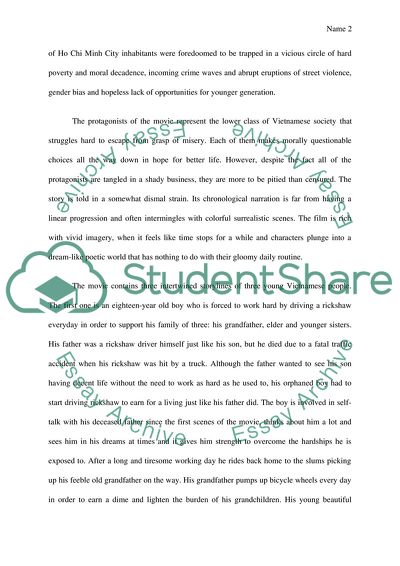Cite this document
(“Postwar Vietnamese Film - CYCLO Essay Example | Topics and Well Written Essays - 1500 words”, n.d.)
Postwar Vietnamese Film - CYCLO Essay Example | Topics and Well Written Essays - 1500 words. Retrieved from https://studentshare.org/visual-arts-film-studies/1696581-postwar-vietnamese-film-cyclo
Postwar Vietnamese Film - CYCLO Essay Example | Topics and Well Written Essays - 1500 words. Retrieved from https://studentshare.org/visual-arts-film-studies/1696581-postwar-vietnamese-film-cyclo
(Postwar Vietnamese Film - CYCLO Essay Example | Topics and Well Written Essays - 1500 Words)
Postwar Vietnamese Film - CYCLO Essay Example | Topics and Well Written Essays - 1500 Words. https://studentshare.org/visual-arts-film-studies/1696581-postwar-vietnamese-film-cyclo.
Postwar Vietnamese Film - CYCLO Essay Example | Topics and Well Written Essays - 1500 Words. https://studentshare.org/visual-arts-film-studies/1696581-postwar-vietnamese-film-cyclo.
“Postwar Vietnamese Film - CYCLO Essay Example | Topics and Well Written Essays - 1500 Words”, n.d. https://studentshare.org/visual-arts-film-studies/1696581-postwar-vietnamese-film-cyclo.


